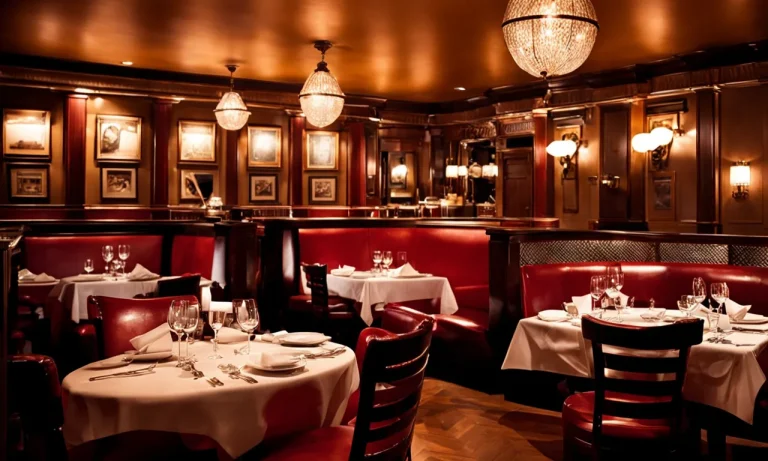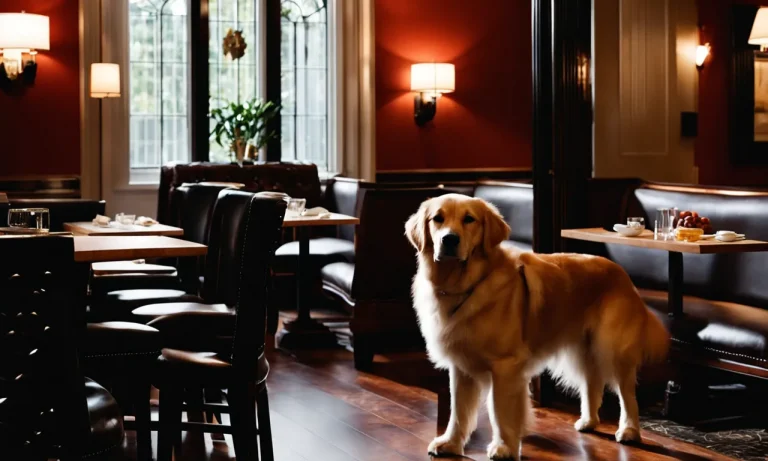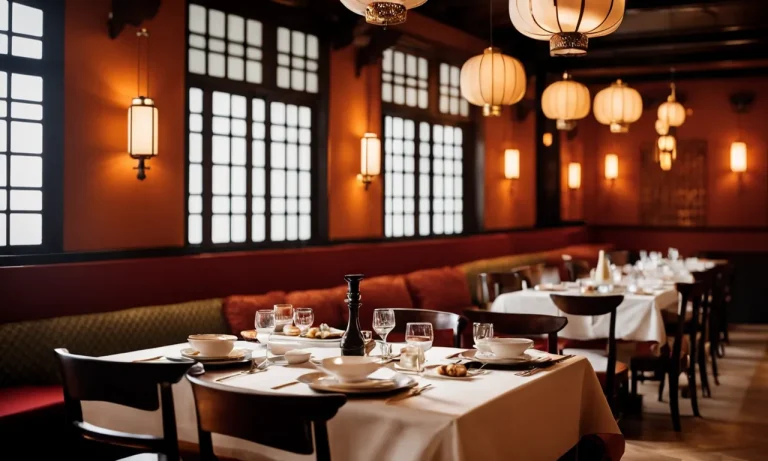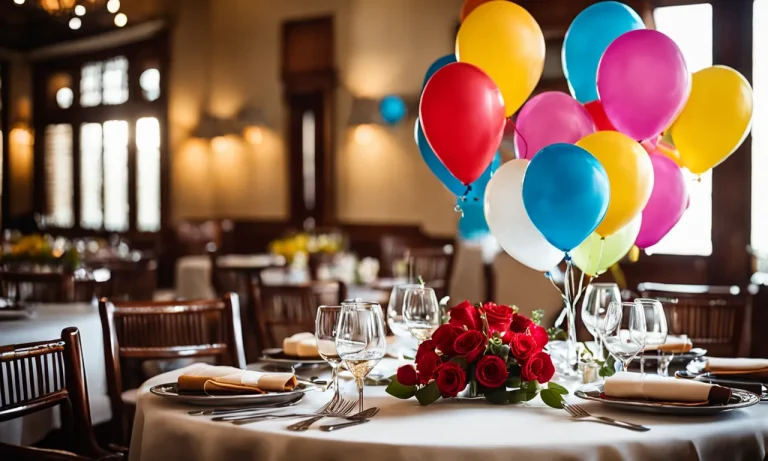Restaurants are places we often visit to grab a bite with family and friends. But you may have wondered, with all the rules and norms around behavior, are restaurants actually private or public spaces? This is an interesting question with no straight yes or no answer.
If you’re short on time, here’s the quick answer: Restaurants are generally considered public places from a legal perspective, but policies and norms make them feel more private or exclusive compared to fully public spaces like parks.
What Makes a Place Public vs Private
When it comes to determining whether a restaurant is considered a public place, there are several factors to consider. One of the main factors is ownership and access. In general, public places are those that are owned by the government or open to the general public, while private places are owned by individuals or businesses and have restricted access.
However, the line between public and private can sometimes be blurry, especially when it comes to establishments like restaurants.
Ownership and access
In terms of ownership, restaurants are typically considered private establishments as they are owned by individuals or corporations. However, what sets them apart from other private properties is their accessibility to the public.
Restaurants are designed to cater to customers and are open to anyone who wishes to dine there. This open access to the public is what distinguishes restaurants from other private properties like homes or offices.
Additionally, some restaurants may have outdoor seating areas or patios that are open to the public, further blurring the line between public and private spaces. These areas are often subject to local regulations and may require permits or licenses to operate, reinforcing the idea that they are intended for public use.
Reasonable expectation of privacy
Another factor to consider when determining whether a restaurant is a public place is the reasonable expectation of privacy. In general, public places are those where individuals have a lower expectation of privacy compared to private places.
When dining at a restaurant, patrons understand that they are in a public space where their actions may be observed by others. However, this does not mean that restaurants lack any expectation of privacy.
While diners may be visible to others, they still have a reasonable expectation that their conversations and activities will remain private.
Ability to remove people
One key aspect that distinguishes public places from private ones is the ability to remove individuals from the premises. In public places, the management or authorities have limited control over who can enter or stay.
On the other hand, private establishments like restaurants have the right to refuse service or remove individuals who do not comply with their policies or pose a threat to other customers.
It’s important to note that while restaurants have the ability to remove people, they must do so in accordance with anti-discrimination laws and regulations. They cannot discriminate against individuals based on protected characteristics such as race, gender, or disability.
Restaurants as Private Businesses
When it comes to the question of whether a restaurant is considered a public place, it is important to understand that restaurants are actually private businesses. This means that the owners have the right to set their own rules and regulations within their premises.
Restaurant ownership and premises
Restaurant owners have complete control over their establishments, including the physical space they occupy. This means they can decide on the layout, design, and overall ambiance of the restaurant. They have the authority to enforce specific policies and regulations within their premises to ensure the smooth operation of their business.
Reservation policies
Restaurants often have reservation policies in place to manage their customer flow and ensure a pleasant dining experience for all. These policies may include requiring customers to make reservations in advance, specifying a maximum party size, or even charging a fee for cancellations.
The purpose of such policies is to ensure that the restaurant can accommodate all customers efficiently and avoid any unnecessary disruptions.
Dress codes and house rules
Many restaurants have dress codes and house rules in place to maintain a certain standard of decorum and ambiance. These rules may vary from restaurant to restaurant and can include guidelines on appropriate attire, behavior, and even restrictions on cell phone usage.
These rules are set by the restaurant owners to create a specific atmosphere and ensure an enjoyable dining experience for all patrons.
Right to refuse service
As private businesses, restaurants also have the right to refuse service to individuals under certain circumstances. While discrimination based on race, religion, or other protected characteristics is illegal, restaurants can refuse service if a customer violates their policies or behaves in a disruptive or disrespectful manner.
This right to refuse service enables restaurants to maintain a safe and pleasant environment for all patrons.
It’s important to note that while restaurants have the right to set their own rules and regulations, they are still subject to local and federal laws, including health and safety regulations. These regulations ensure that restaurants maintain cleanliness and adhere to proper food handling practices to protect the health and well-being of their customers.
For more information on restaurant ownership and regulations, you can visit the U.S. Food and Drug Administration’s website.
Restaurants as Public Accommodations
Open to the general public
Restaurants are generally considered public places as they are open to the general public. They welcome customers from all walks of life, regardless of their background or status. Whether you are a local resident, a tourist visiting the area, or someone passing through, you are typically allowed to enter and dine at a restaurant.
Public accommodations, such as restaurants, play a vital role in promoting inclusivity and providing a space where people can gather, enjoy a meal, and socialize. These establishments often serve as meeting points for friends, families, colleagues, and even strangers who come together to share a dining experience.
Protected classes and discrimination laws
When it comes to restaurants as public accommodations, it’s important to understand that they are subject to anti-discrimination laws. These laws vary by country and region, but they generally protect individuals from being denied service or treated unfairly based on certain protected classes, such as race, religion, gender, disability, or sexual orientation.
Discrimination in restaurants is illegal and can lead to serious consequences for the establishment. Customers who believe they have been discriminated against can file complaints with relevant authorities or seek legal recourse.
It is crucial for restaurant owners and staff to be aware of these laws and ensure that they provide equal treatment and service to all customers.
Health and safety regulations
In addition to being open to the general public and complying with anti-discrimination laws, restaurants are also required to adhere to strict health and safety regulations. These regulations are put in place to protect the well-being of both customers and employees.
Health inspections are conducted regularly to ensure that restaurants meet certain standards in terms of cleanliness, food handling, storage, and overall hygiene. Violations can result in penalties, closure, or loss of reputation for the restaurant.
By following health and safety regulations, restaurants demonstrate their commitment to providing a clean and safe environment for their customers. This not only helps to prevent the spread of diseases but also enhances the overall dining experience.
For more information on discrimination laws in restaurants, you can visit the website of the U.S. Department of Justice: www.justice.gov/crt/fcs/TitleIII.
The Blurry Line Between Public and Private
When it comes to defining whether a restaurant is considered a public place, the line can often become blurry. While restaurants are generally open to the public and provide services to anyone who walks in, they also have certain elements of privacy and exclusivity.
Let’s take a detailed look at some factors that contribute to this ambiguity.
Social norms and etiquette
Social norms play a significant role in determining whether a restaurant is considered a public place. In most cases, restaurants operate under the assumption that customers will follow certain etiquette and behavior standards.
This includes respecting the privacy of other diners, keeping conversations at an appropriate volume, and adhering to dress codes if applicable. These norms create an atmosphere that is more akin to a private setting than a purely public one.
While there may not be any legal consequences for breaching social norms in a restaurant, it is important to remember that disregarding these norms can lead to discomfort or even conflict among individuals.
Therefore, it is crucial to be mindful of others and conduct oneself in a manner that respects the privacy and comfort of fellow patrons.
Surveillance and privacy rights
Restaurants, like many other businesses, often employ surveillance systems to ensure the safety of their customers and staff. These systems may include security cameras positioned throughout the premises.
While the main purpose of these cameras is to deter criminal activity and provide evidence if an incident occurs, they also raise questions about privacy rights.
It is important to note that the use of surveillance cameras in public places is generally considered legal, as long as certain guidelines are followed. However, the extent to which these cameras can intrude on individuals’ privacy can be a contentious issue.
While patrons have a reasonable expectation of privacy in certain areas, such as restrooms or changing rooms, the rest of the restaurant is generally considered to be a public space where surveillance can be legally conducted.
Liability for incidents
One aspect that further blurs the line between public and private in restaurants is the concept of liability for incidents that occur on the premises. Restaurants have a legal responsibility to provide a safe environment for their customers.
This includes taking measures to prevent accidents, ensuring food safety, and addressing any potential hazards.
However, determining liability can be complex, especially in cases where incidents involve third parties. For example, if a customer slips and falls due to a spill caused by another diner, the restaurant may not be directly responsible for the accident.
In such cases, liability may fall on the individual who caused the spill or failed to address it promptly.
It is important for restaurant owners and managers to have clear protocols in place to handle incidents and ensure the safety of their patrons. This includes proper training for staff, regular inspections, and prompt action in addressing potential hazards.
Conclusion
In summary, while restaurants have aspects of private businesses, legally they are treated as public spaces in many regards. Norms around behavior and exclusivity make restaurants feel more private than fully public parks or roads.
But overall, the line between public and private is blurred when it comes to restaurants.






